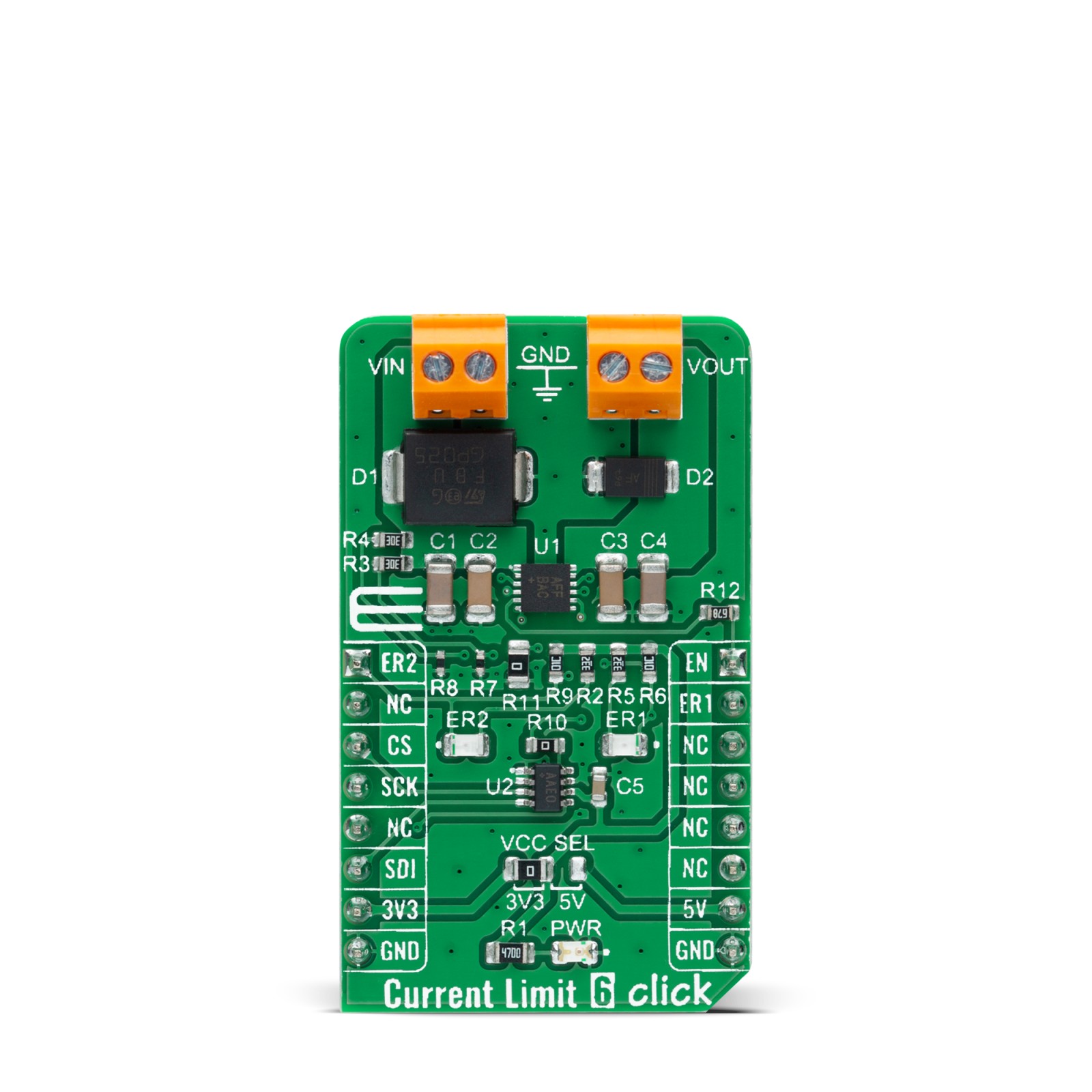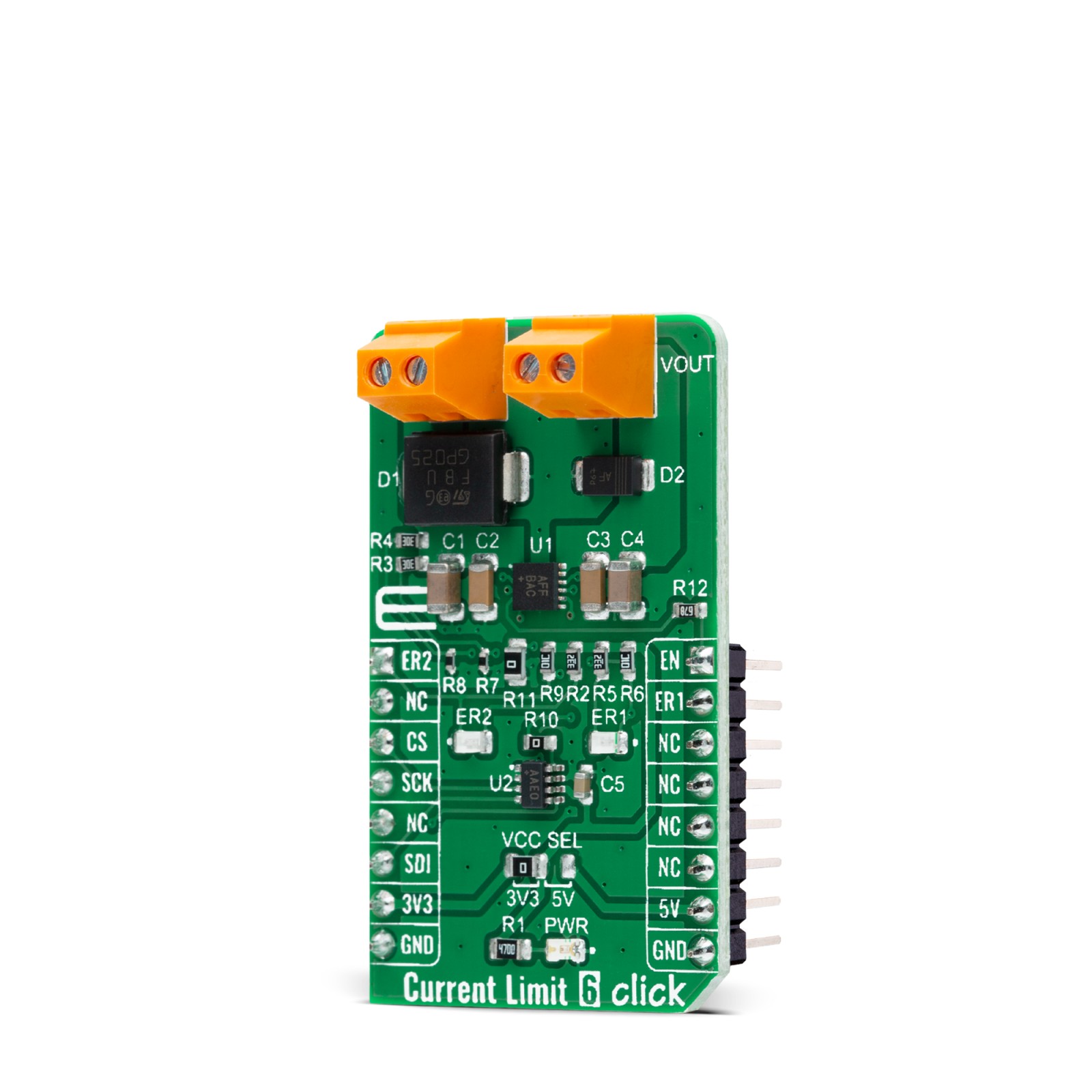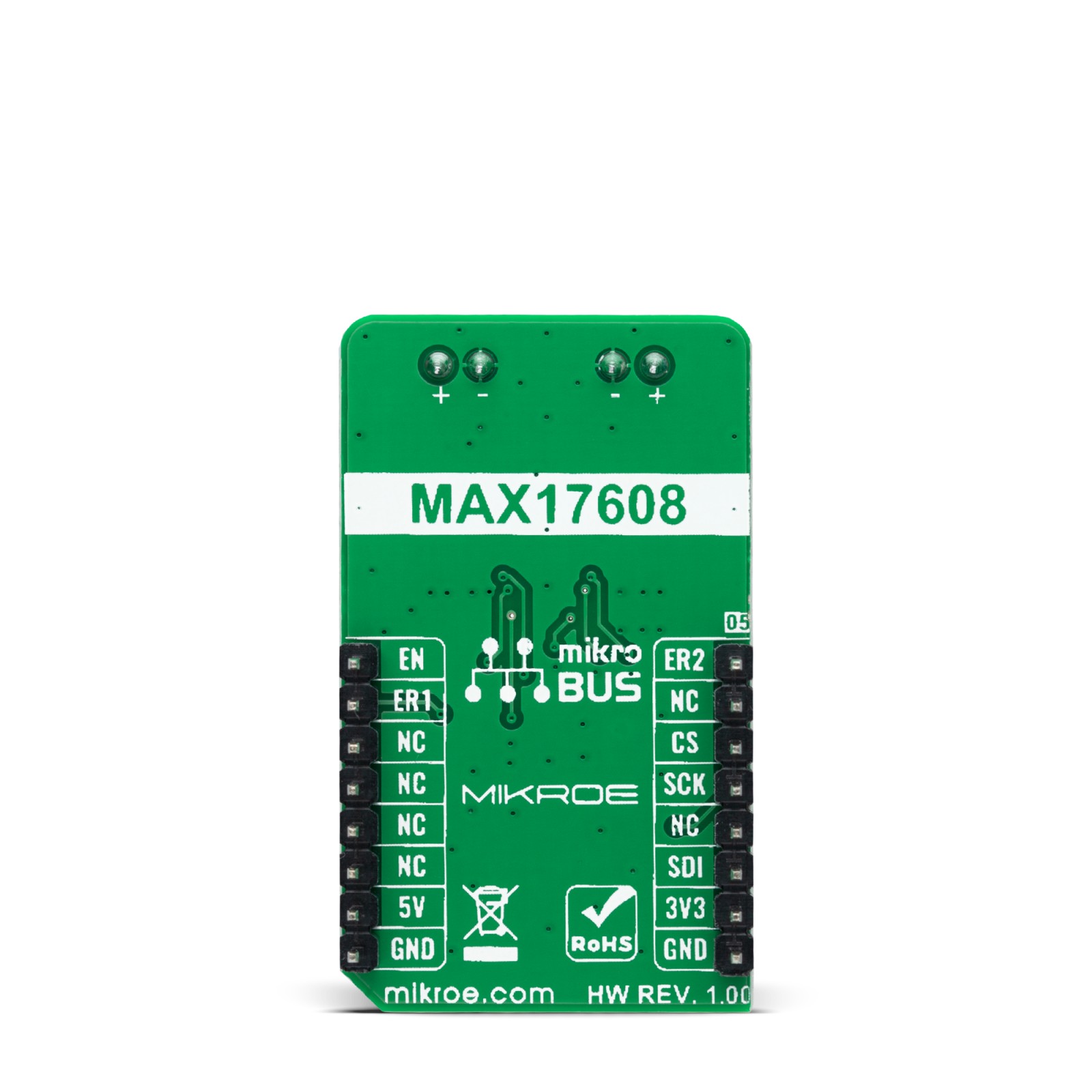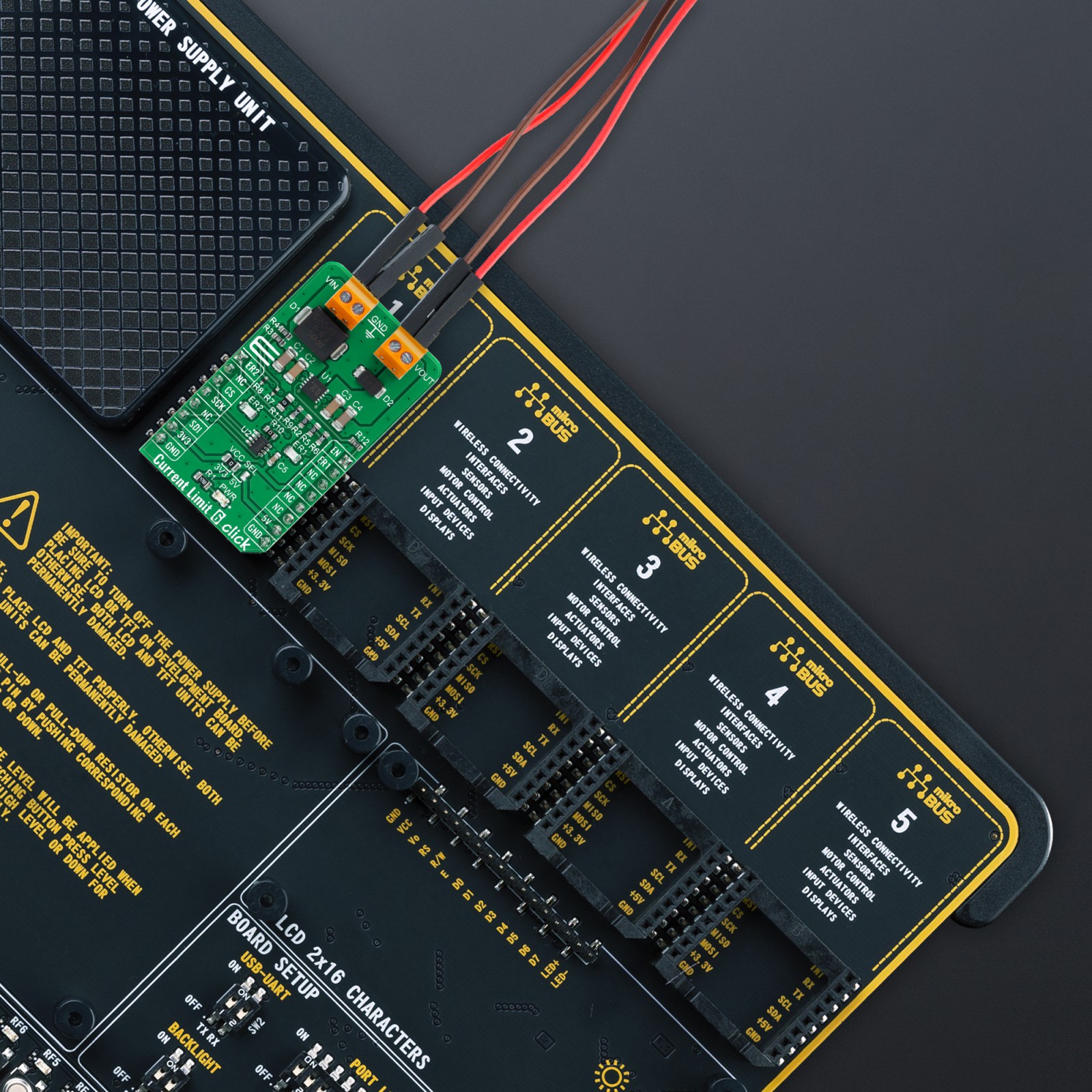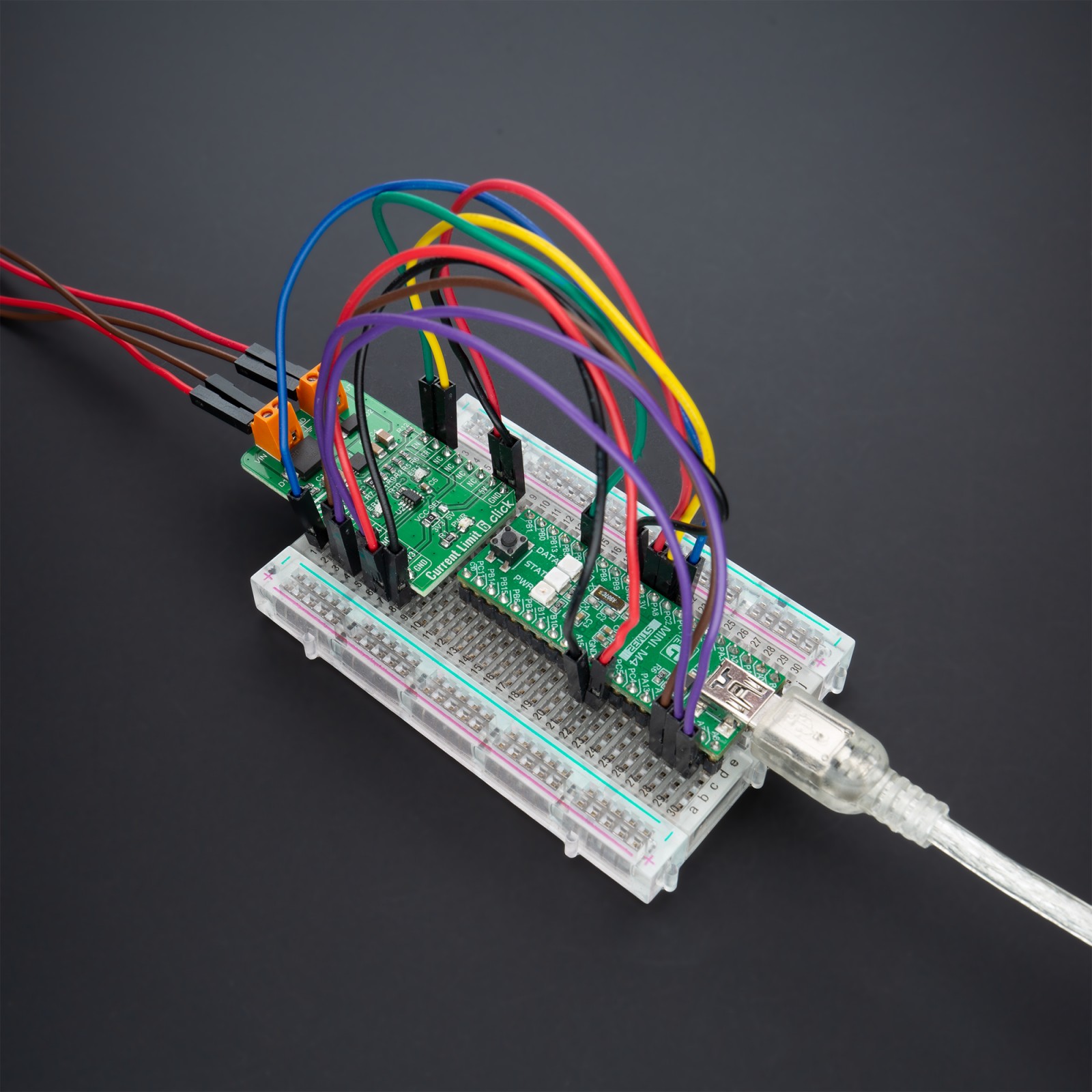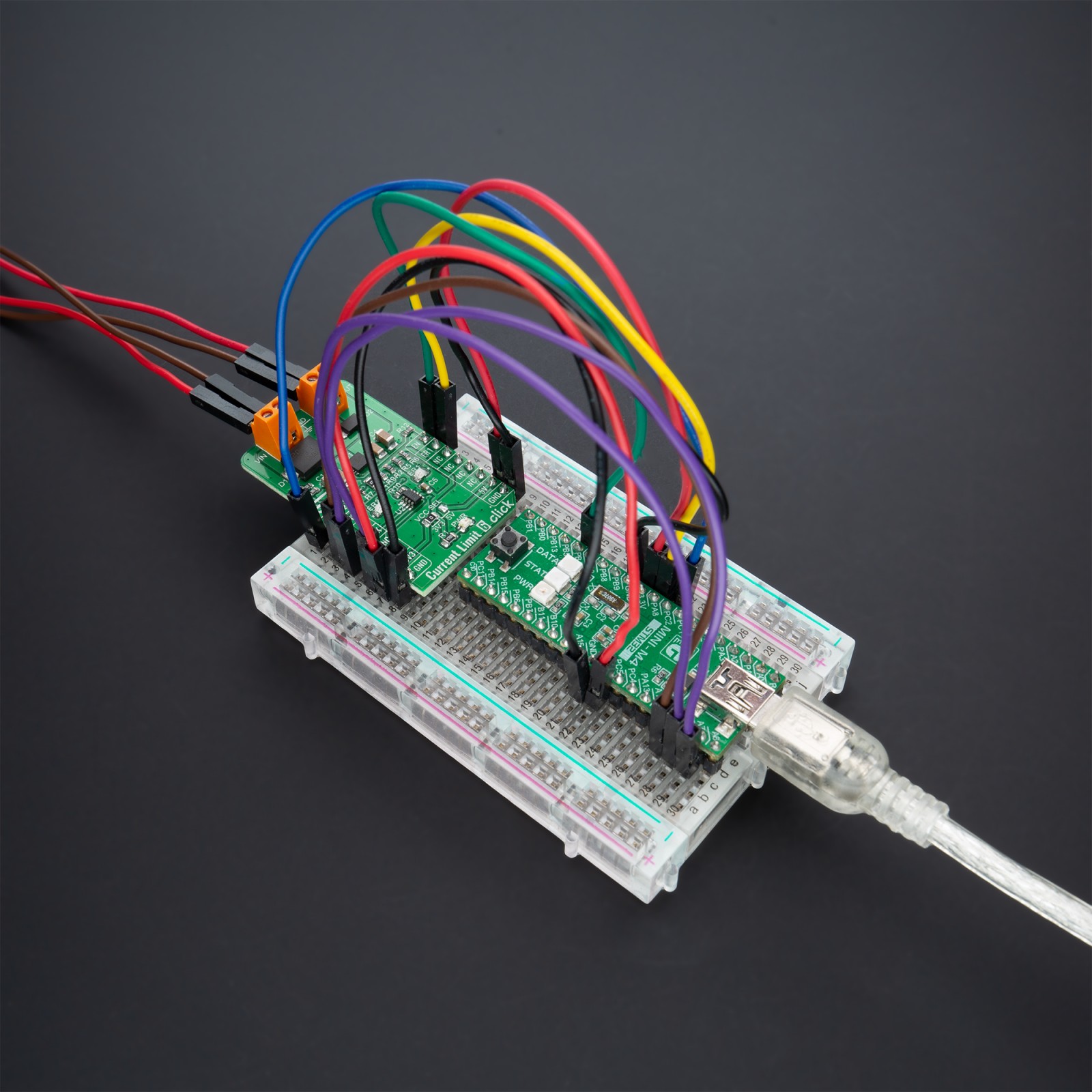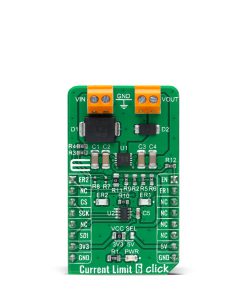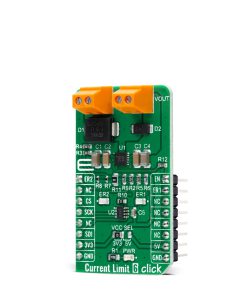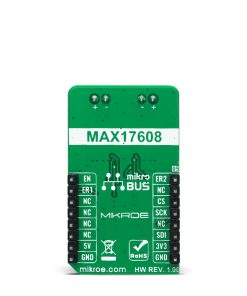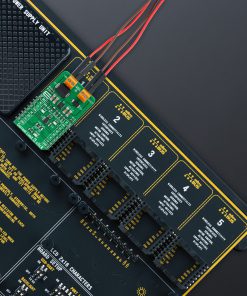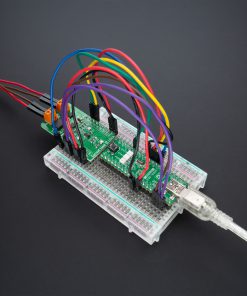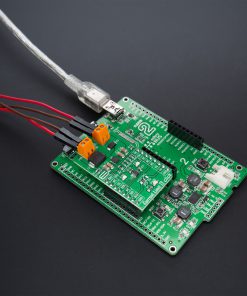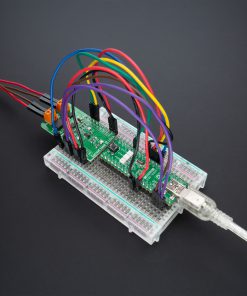Current Limit 6 Click
R535.00 ex. VAT
Current Limit 6 Click is a compact add-on board representing a current-limiting solution. This board features the MAX17608, adjustable overvoltage, and overcurrent protection device from Analog Devices. This Click board™ is ideal for protecting systems with the flexible input overvoltage protection range from 4.5V to 60V, and the adjustable input undervoltage protection range is 4.5V to 59V. Also, the maximum current limit is 1A and can be programmed through a digital potentiometer MAX5401. When the device current reaches the programmed threshold, the device prevents further current increases by modulating the FET resistance. This Click board™ is suitable for applications in portable equipment, process instrumentation, and condition monitoring, or with power supplies, protecting them in a short circuit or other overload conditions.
Current Limit 6 Click is supported by a mikroSDK compliant library, which includes functions that simplify software development. This Click board™ comes as a fully tested product, ready to be used on a system equipped with the mikroBUS™ socket.
Stock: Lead-time applicable.
| 5+ | R508.25 |
| 10+ | R481.50 |
| 15+ | R454.75 |
| 20+ | R437.63 |

